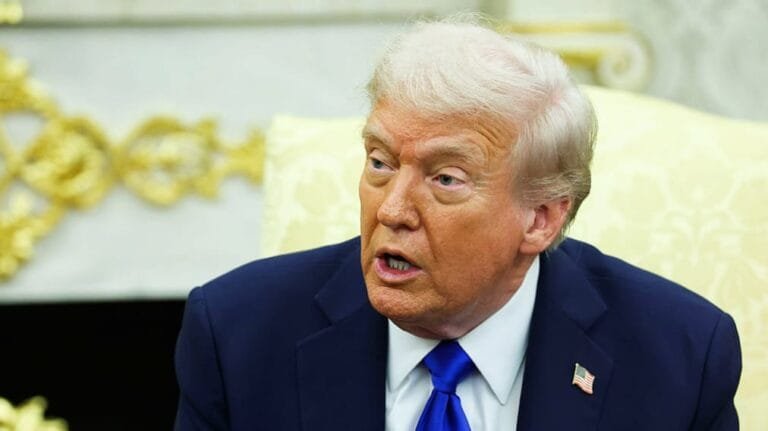
Swiss and US officials symbolizing cooperation during trade talks.
Introduction: What Happened and Why It’s Important US-Switzerland trade
According to rumors and news agencies, the visit of Swiss business leaders to the US has helped to somewhat ease US-Switzerland trade tensions. The key points are as follows: The US had prepared to impose tariffs of up to 39% on goods imported from Switzerland. A Swiss business delegation met with US President Donald Trump, offering initiatives to resolve this trade impasse. According to news sources, a “letter of intent” is expected to be presented in the next few weeks, and such talks or an agreement could be announced at the World Economic Forum (Davos) in January next year. Swiss businessmen have made proposals to the US, including moving gold refining operations to the US, investing in US infrastructure projects, and increasing purchases from US aircraft manufacturers.
Background of Switzerland-US Trade Relations
Industries such as financial services, the watchmaking industry, gold mines, high-tech equipment, and pharmaceuticals are renowned worldwide. Thus, Switzerland’s exports include high-value products, not just consumer goods, but specialized items. Switzerland has been an attractive trading partner for the United States.
Switzerland has also made significant investments in the United States—meaning that the bilateral relationship is not limited to exports and imports, but also involves capital investment, partnerships, and production. The trade deficit also emerged—the United States expressed concern about its trade balance with Switzerland. Swiss businesses promised to improve. The crisis began when the United States announced high tariffs on goods imported from Switzerland, posing a challenge to the trade partnership.
Business Leaders’ Initiative: What Happened
In this section, we will examine the actions taken by Swiss business leaders, the companies represented, and the proposals that emerged. According to reports, the Swiss delegation included representatives from the following major companies: Rolex (watchmaker) Partners Group (private equity firm) Mercuria (energy trading company) Richemont (luxury goods group) MKS PAMP Group (gold and silver refining company) MSC (shipping/logistics group) Their Visit and Proposals The delegation met with US President Trump. They made “proposals” such as: Switzerland will increase investment in the US, and will consider relocating existing production or resources abroad. For example, the relocation of gold-smelting operations to the US was discussed. Also included was participation by Swiss companies in US infrastructure projects and increased purchases by Switzerland from US aircraft manufacturers.
Promises to reduce the US-Switzerland trade deficit over the next 5-7 years. The Swiss Ministry of Economy stated that the delegation was a “private initiative,” supported by the government, but not a government-led negotiation. What this means is that it is a clear indication that Swiss private sector (business leaders) are actively bringing “friendly proposals” to the US—outlining not only Switzerland’s defense but also trade and investment opportunities for both the US and Switzerland. Such initiatives send a message to the US that Switzerland can be an “interesting trading partner”—not just an exporter. In this way, this strategy is a step towards “strategic trade diplomacy”—where corporate decisions complement government negotiations.
Sign of “Emergence from the Stasis”: Why a Recent Turning Point is Perceived
It is important to understand that this initiative should not be viewed simply as a visit or meeting—but rather as a sign of a “pause” where both sides are moving toward a solution. A Potential Tariff Reduction: There are reports that the US is considering a “waiver” of tariffs on Swiss goods at a rate of 39%. If the proposal goes through, this rate could be equivalent to the ~15% tariff the US has agreed with the European Union (EU). Thus, this signals that the US is shifting from a “tough” stance to a “negotiable” one—which could ease trade tensions. Communication between the two sides has intensified. US Trade Representative Jamieson Greer has held “very constructive” discussions with Swiss Economy Minister Guy Parmelin (the incoming Swiss President) and a representative of the Swiss Secretary of Economic Affairs.
This dialogue means that the two governments are now moving towards formal negotiations—not just private company initiatives, but government-level talks. Potential for Investment and Trade Proposals to Move Forward Swiss companies’ talk of investing in the US, shifting production, and increasing American purchases has offered the US the option of “profit-sharing.” If these investments and commitments materialize, they could be a possibility. If this is the case, the US can begin to see Switzerland as “our country—not just an export destination, but a partner investor.”
Strategic and Psychological Dimensions: How This Story Connects
Trade and diplomatic negotiations aren’t just technical and economic; they have a deeper psychological, strategic, and emotional perspective. Let’s look at this initiative from the perspective of the human mind—from the perspective of investors, business leaders, and governments. Trust and Confidence: For a long time, one of the reasons for the “stagnation” in Switzerland-US relations was that the US felt that Switzerland wasn’t providing enough “return” in exports and investment—the trade deficit was a point of concern. The Swiss delegation’s proposal to the US is a step toward building trust—a message of “Look, we’re not just coming to sell goods, we’re coming to invest, to work in America.”
When trust grows, negotiations become easier—creating a psychologically positive atmosphere.
The United States has been adopting a stricter trade policy globally, especially when it perceives trading partners as taking an “unfair advantage.” Countries like Switzerland, which have traditionally acted as “strong exporting nations,” have been challenged to change. Swiss companies have understood this perspective and actively offered that “we’ll do something for the United States too.” This message shifts from “I’m just taking advantage” to “I’ll share.”
Dimensions of the Trade Initiative
This strategic shift has brought a new dimension to the power balance in the US-Switzerland relationship: Switzerland has moved beyond its traditional role as an exporter to that of an investor-partner. Investor Sentiments and Trader Psychology When a trading position “upsurges,” the sentiment is often: “Should I get in now?”—and when a stagnation appears, the question arises: “Should I get out?” In this case, the Switzerland-US situation, the recovery from stagnation is a positive sign, meaning that the “predominant exporting country is no longer trapped in the US market” but is moving towards a solution. This is important from a business and investor psychology perspective, because the more investors trust, the more flexible they will be in making business decisions.
Patience and strategic thinking are crucial to understanding that such trade negotiations don’t yield immediate results—they take time. The Switzerland-US case is similar: proposals have been made, negotiations have begun, but an “agreement” has not yet been announced. Investor-business leaders who are patient are able to make better decisions in such situations—thinking strategically rather than succumbing to immediate fear or making hasty decisions. In this story, Switzerland has adopted a “wait a while, make a proposal, and partner” approach—which is geared towards building a stable relationship over the long term.
What May Happen Next – Opportunities and Challenges
Now let’s examine the possibilities ahead and what challenges may be faced. Key Opportunities: Tariff Reduction and Export Growth If the US reduces tariffs in accordance with the agreements (for example, to ~15%), the US market will become cheaper and more attractive for Swiss exporters. Increasing Swiss Investment in the US The proposed US-based investments (infrastructure, energy, aircraft, and refining) by Swiss companies have contributed to the expansion of the US economy and the creation of jobs.
This could strengthen Switzerland’s strategic position. Bilateral trade and cooperation could expand beyond exports and imports, opening up new dimensions such as co-production, investment partnerships, and technology/R&D collaboration. This would deepen the relationship between the two countries. Challenges and Risks: The complexity of an agreement is easy to propose, but implementing it and satisfying both parties is difficult. Different industry sectors have different demands, and diplomatic and trade priorities often conflict.
High Expectations and Untimely Results If Swiss exporters don’t see immediate benefits, or if their hopes for US investment aren’t met, disappointment could ensue—undermining psychological confidence. The Global Trade Environment: Bilateral agreements like these are not just influenced by two countries, but also by global conditions (such as supply-chain crises, currency fluctuations, and other countries’ policies). Even if a US-Switzerland agreement is reached, risks such as global competition, technological change, and so on remain. Shifting Geopolitical Tensions: US trade policies are subject to rapid changes, especially when faced with electoral climate or domestic economic challenges. Therefore, stability is not guaranteed—Switzerland must ensure that they are prepared with a long-term perspective, not just in line with the current US administration.
Conclusion: A New Beginning for US-Switzerland Trade Relations
The “stagnation” in Switzerland-US trade relations—especially tariff and trade deficit-related pressures—is now likely a turning point. The visit of Swiss business leaders to the US, and the ideas of offer-negotiation and investment-participation, are positive signs in this direction. It would be fair to say that this is not a resolution of problems, but a renewal of hope—that is, it points to a place where the two countries are once again openly engaging with each other. This initiative goes beyond just a trade-export understanding—it addresses deeper economic and strategic questions like “Who should cooperate with whom?”, “Who should invest?”, and “How should the trade deficit be reduced?”






